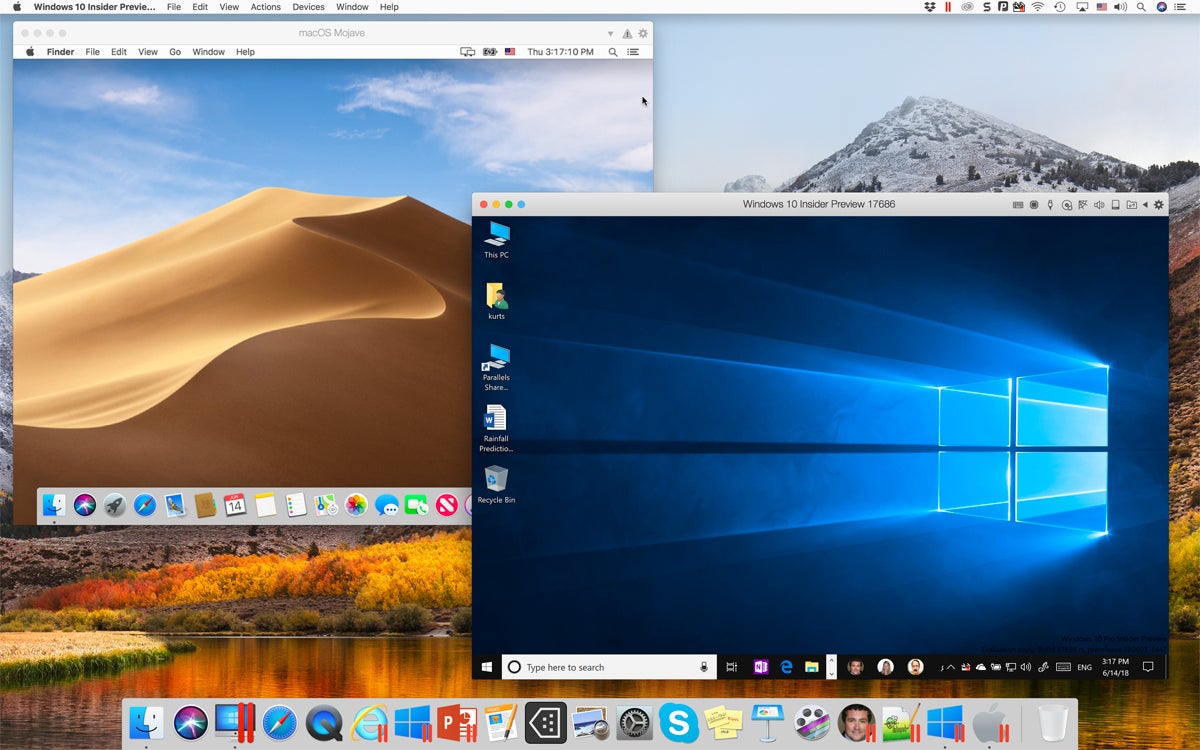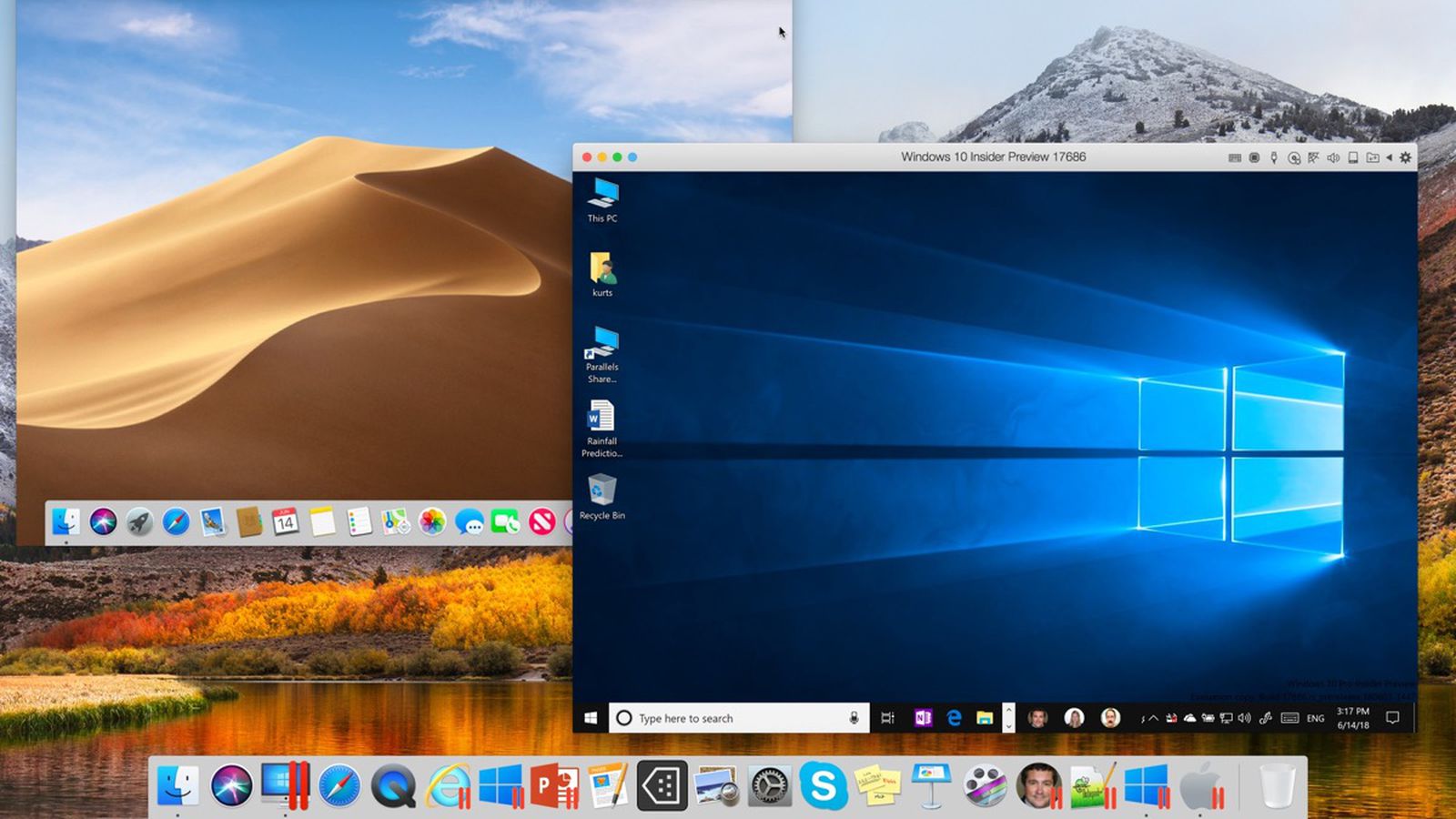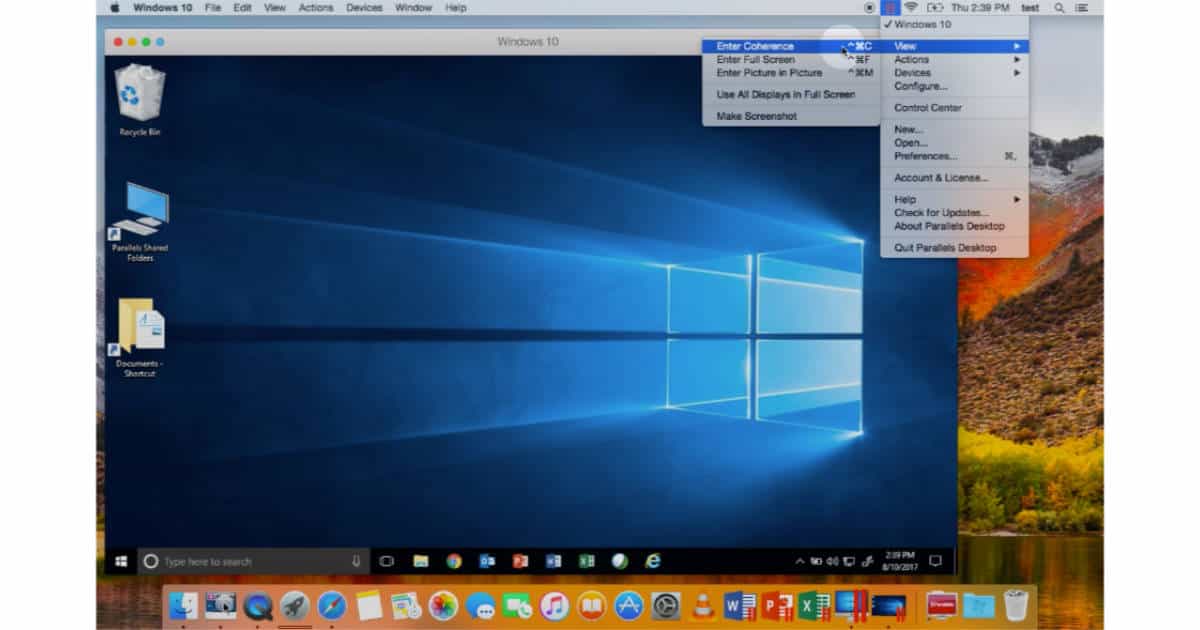
This setup is very convenient when you want to dedicate one display to your virtual machine but leave the others for macOS.
#Parallels for mac on mac full
Move the virtual machine window to the corresponding monitor and enter full screen. Start a virtual machine, click View macOS menu tab and make sure Use All Displays in Full Screen is not checked.ģ.
#Parallels for mac on mac mac
NOTE: to apply these changes you need to log out from your Mac account(Apple logo -> Log out) and login back again.Ģ. Open macOS System Preferences > Mission Control > Make sure that ' Displays have separate spaces' feature is enabled. If you want to use your virtual machine on one of the external displays connected to Mac:ġ.

To exit Full Screen mode, do one of the following: Note: the same action works with Dock when moving the mouse to the screen bottom. To invoke macOS menu bar, simply move your mouse cursor to the very top of the screen, the menu bar will appear in a second.

When in Full Screen mode, macOS menu bar and the Dock are hidden. Then again click the View menu and select Enter Full Screen.įrom Window mode, select View > Enter Full Screen or click the Full Screen(green) icon in the top left corner of the virtual machine window.

Windows) icon in Dock, then select View - Exit Coherence. Single Monitor Enter Full Screen To enter Full Screen view mode, do one of the following:įrom Coherence mode, right click the guest operating system (e.g.
#Parallels for mac on mac install
Well, of course, maybe just how many hours you are willing to spend in front of your monitor without taking a small break.ĭid you manage to install Windows 11 on your M1-powered device, using Parallels 17? Let us know in the comments section below.You can set Parallels virtual machine to occupy the entire Mac screen, one of your external screens or all connected external displays. So it doesn’t matter if you were an Apple person all your life, you still have the chance to try out the Redmond company’s recent operating system, without having to worry about a thing. It is up to some other component, such as the guest operating system, to define how the blocks are used.Īlso, if you are looking to game on your Windows 11 ARM< you might want to look into it first, as there are some concerns about gaming on Parallels 17. VHDX presents the same characteristics as a physical hard drive, or SSD, or SAN LUN, or any other block storage. It is also not concerned with partitions. It is not related to formats, such as NTFS or FAT, or EXT3. You can relax now, as it has been confirmed that you can indeed run Microsoft’s new operating system using Parallels, on your M1 chips.Īnd just in case you aren’t familiar with the term, VHDX is a semi-open file format that describes a virtual hard disk. Given the unpredictable state in which Windows 11 was a few weeks ago, and the scepticism of many, in regards to it being ready in time, every Mac owner was getting worried at the thought they couldn’t run it on VM. You can run Windows 11 on M1 chip powered desktops

Recent information dissipates all the doubt and brings smiles to the faces of those who really wanted to take Windows 11 for a test run on their Apple desktops and laptops. Trying to avoid an uncomfortable situation, the Parallels team fixed this issue with version 17.0.1 but gave absolutely no guarantee that similar incidents won’t happen again. However, soon after that, the development version started to have hardware compatibility errors when using the software. One of the most popular virtualization tools available now, Parallels Desktop, recently launched version 17, which was used to run the Windows 11 beta on Apple M1. Home › Windows 11 › Get ready to use Windows 11 ARM on M1 devices, with Parallels


 0 kommentar(er)
0 kommentar(er)
